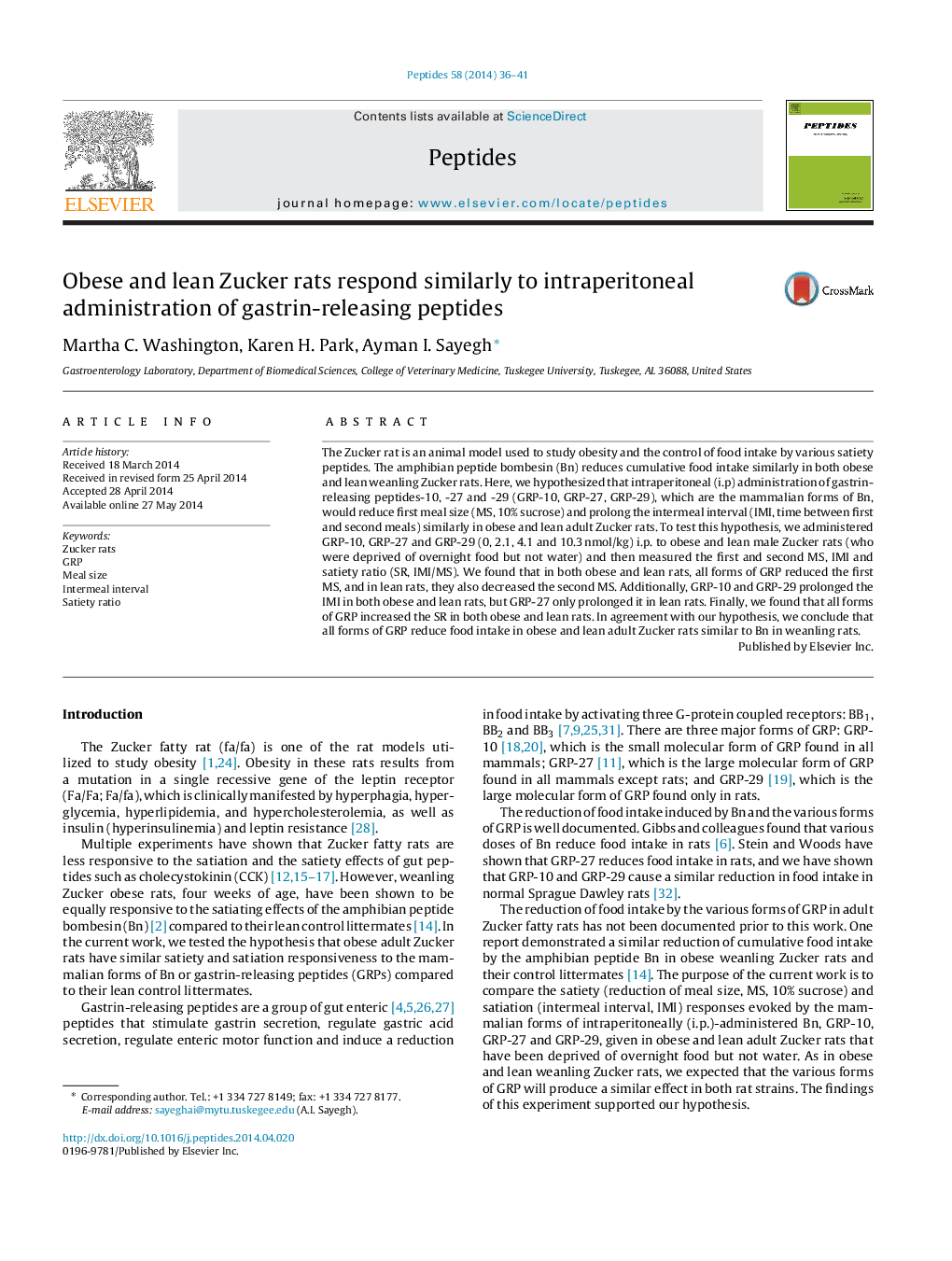| Article ID | Journal | Published Year | Pages | File Type |
|---|---|---|---|---|
| 2006009 | Peptides | 2014 | 6 Pages |
•Bombesin reduces food intake similarly in both obese and lean weanling Zucker rats.•We hypothesized that GRP would reduce MS and prolong the IMI.•GRP reduced MS and prolonged the IMI in both strains.•The effect of Bn in weanling Zucker rats is similar to GRP effects.
The Zucker rat is an animal model used to study obesity and the control of food intake by various satiety peptides. The amphibian peptide bombesin (Bn) reduces cumulative food intake similarly in both obese and lean weanling Zucker rats. Here, we hypothesized that intraperitoneal (i.p) administration of gastrin-releasing peptides-10, -27 and -29 (GRP-10, GRP-27, GRP-29), which are the mammalian forms of Bn, would reduce first meal size (MS, 10% sucrose) and prolong the intermeal interval (IMI, time between first and second meals) similarly in obese and lean adult Zucker rats. To test this hypothesis, we administered GRP-10, GRP-27 and GRP-29 (0, 2.1, 4.1 and 10.3 nmol/kg) i.p. to obese and lean male Zucker rats (who were deprived of overnight food but not water) and then measured the first and second MS, IMI and satiety ratio (SR, IMI/MS). We found that in both obese and lean rats, all forms of GRP reduced the first MS, and in lean rats, they also decreased the second MS. Additionally, GRP-10 and GRP-29 prolonged the IMI in both obese and lean rats, but GRP-27 only prolonged it in lean rats. Finally, we found that all forms of GRP increased the SR in both obese and lean rats. In agreement with our hypothesis, we conclude that all forms of GRP reduce food intake in obese and lean adult Zucker rats similar to Bn in weanling rats.
